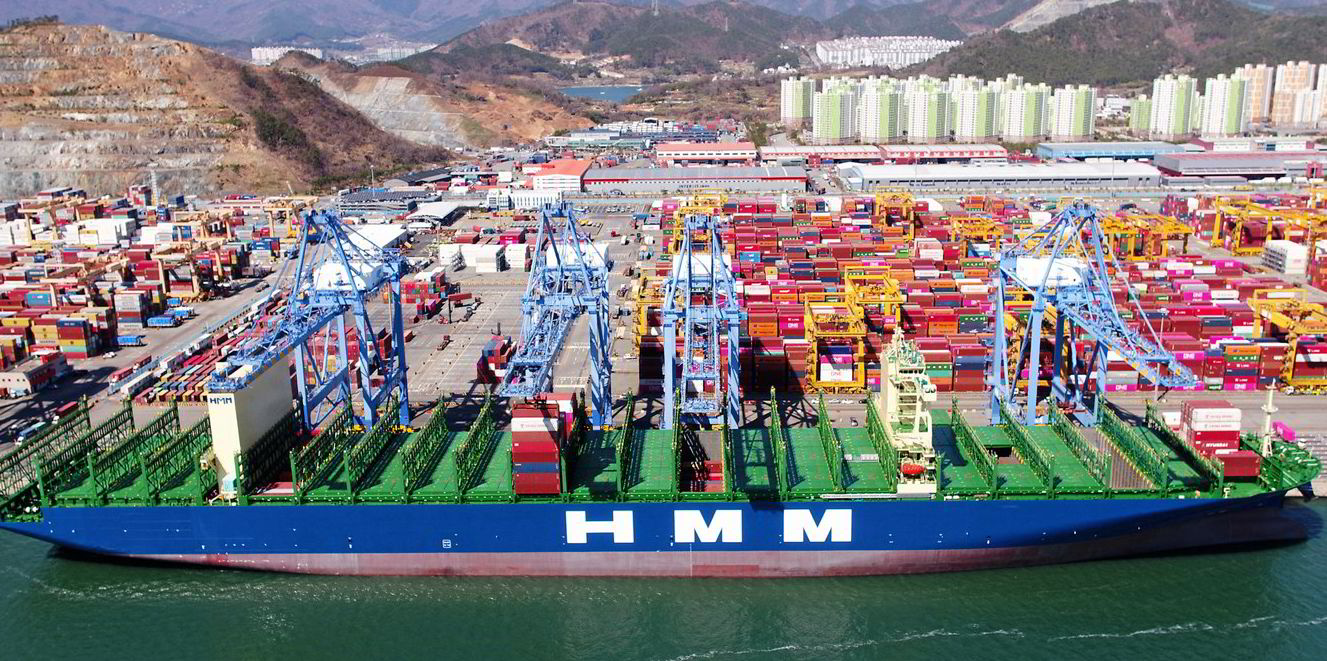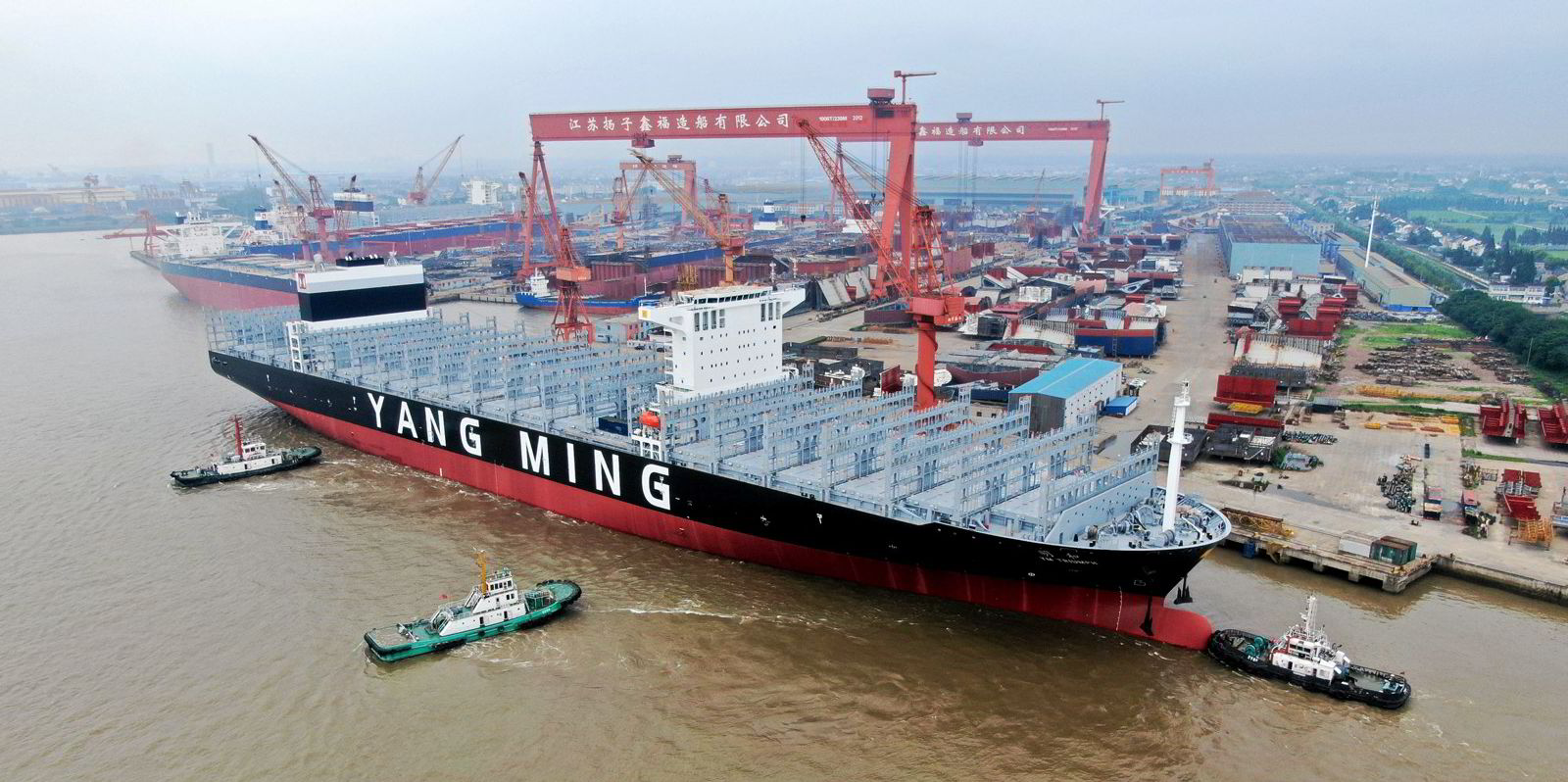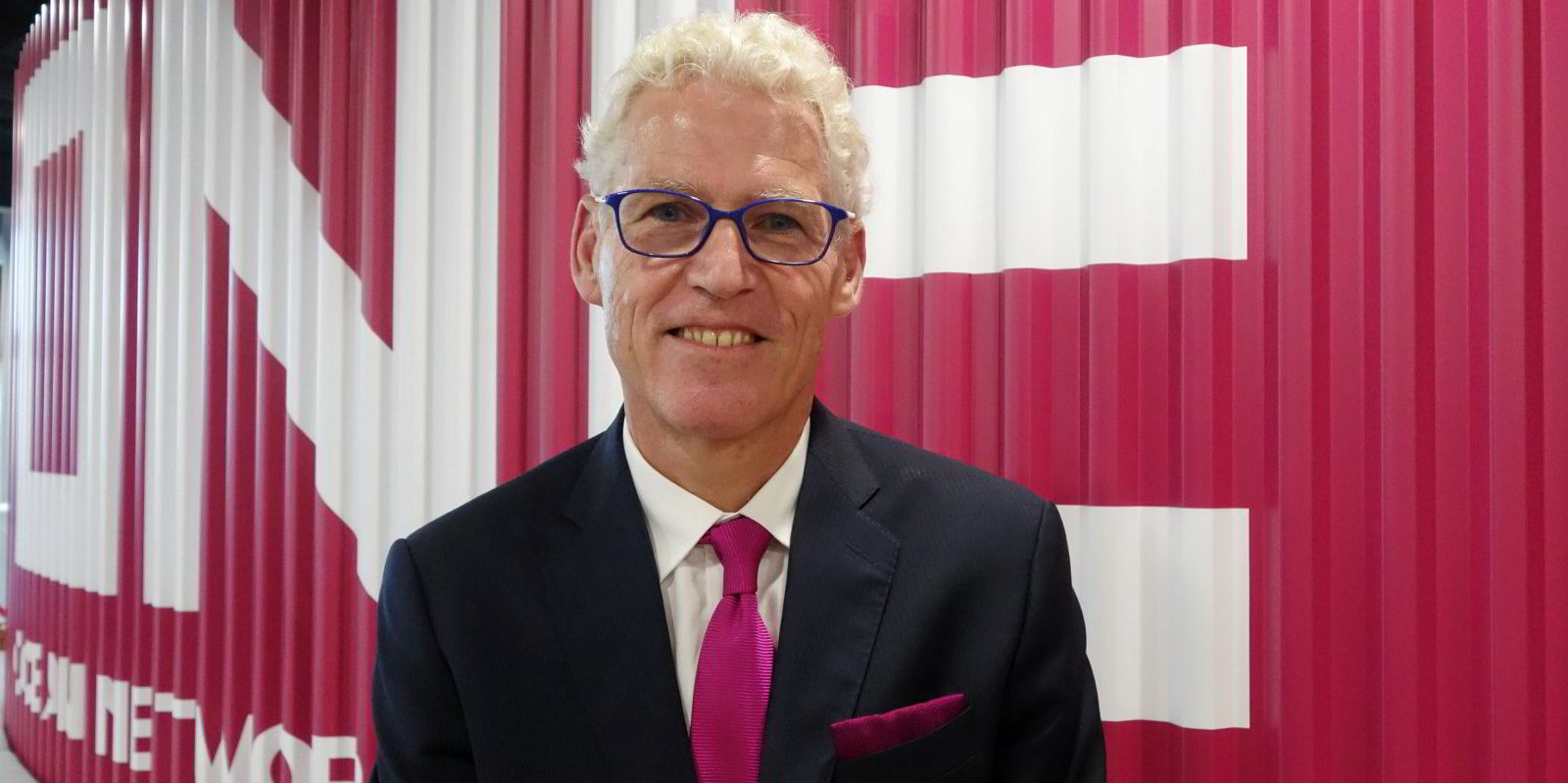HMM’s profits were halved for the second straight quarter, but it is reportedly edging closer to a touted order for methanol-powered container ships.
Net profit at the South Korean liner giant plummeted to KRW 1.4trn ($1.09bn) for the fourth quarter of 2022, down 47% from the same period in 2021, according to preliminary unaudited figures released on 13 February.
The result is sharply down from KRW 2.9trn in the second quarter and KRW 2.6trn in the third.
“Freight rates in most key trade lanes have been under downward pressure since the first half of 2022, led by a slowdown in demand and the ease of supply chain strain,” HMM noted.
It cited the Shanghai Containerized Freight Index, which was down from 5,067 points in January 2022 to 1,129 points in December 2022, to 995 on 10 February.
Spot rates from Asia to the US West Coast of $1,307 per 40-foot equivalent unit were down 91% compared with the same week last year, according to the Freightos Baltic Index.
That affects HMM, which operates as a member of THE Alliance with Hapag-Lloyd, Ocean Network Express and Yang Ming Marine Transport.
Revenues were KRW 3.5trn in the fourth quarter, down 30% from KRW 5.1trn in the previous three months and 20% lower than KRW 4.44trn in the same quarter in 2021.
HMM pledged to seek to secure high-yield cargoes, promote cost control and improve operational efficiency, but sees no improvement in the market.
New order this week?
“Unfavourable market conditions are expected to continue due to widespread inflation and weak economic growth, putting pressure on demand,” it said.
The downturn cast a shadow over an otherwise remarkable year during which HMM profits doubled.
Net profit was KRW 10.06trn for the full year, up 88.6% from KRW 5.3trn in 2021. Revenues were 34.7% higher at KRW 18.5trn, up from KRW 13.7trn.

HMM is thought to be ready to invest those profits to expand its newbuilding portfolio, according to brokers.
TradeWinds reported last November that the company is looking to order a series of 8,000-teu ships, having pondered the benefits of conventional or dual-fuel for the nine vessels that it required.
Brokers suggest that it is ready to plump for slightly larger 8,500-teu vessels with methanol dual-fuel propulsion.
The touted order is likely to be split between South Korea’s Hyundai Heavy Industries and HJ Shipbuilding at an estimated price of $127m per vessel with delivery in 2026, according to European brokers.
HMM’s orderbook comprises 12 conventionally powered, 13,600-teu ships from DSME and HHI, as well as three conventional 1,800-teu Bangkokmaxes from Hyundai Mipo Dockyard.
It will also charter two LNG dual-fuel ships of 7,700 teu each that Greece’s Navios Maritime Partners is set to receive in late 2024 and early 2025.
HMM deploys 78 ships of 816,000 teu and is ranked the eighth-largest liner operator, according to Alphaliner.





